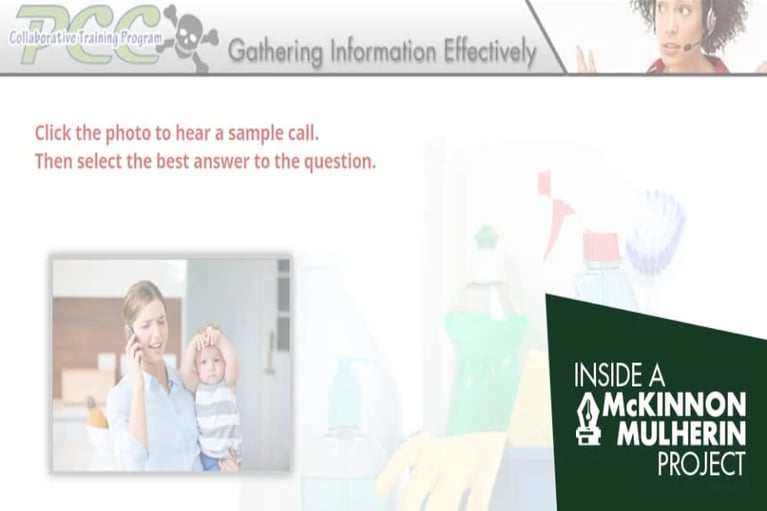Warm Lemonade with Honey . . . and Other Tips for Enhancing eLearning with Narration
Adding narration to an eLearning course creates depth and energy that complements the course’s content. Professional voice-over actors understand the ins and outs—from the preparation through a quality check—of bringing this added dimension to your eLearning course.
But what if you’re asked to record audio in-house? Here are some tips to sound like a pro for the best results for your learning solution.
A Pound of Preparation
A voice-over actor’s work is neither easy nor quick. Yes, most of us can read out loud, but narration requires more preparation. Review and mark up your script—noting tricky words, text that needs to be emphasized, and so on.
Also, before recording, take time to warm up your voice. Some favorite tips from our in-house McMul talent include drinking warm lemonade with honey and performing vocal exercises to gently stretch and warm up the vocal cords, lips, tongue, and jaw. Choose a time of day when you will be most awake and energized to record. And you may want to record at the same time each day to create a consistent sound across sessions.
Where should you record? A recording booth is ideal, but a closet with sound-dampening things like clothes will do. If you don’t have a walk-in closet, try another small room where you can position blankets to dampen potential echoes. Notice ambient sounds both outdoor and in your home and make sure no background noises will interfere as you record. Special recording equipment is ideal, but dependable recording apps that are available for download on a smart device can provide good results.
Let the Fun Begin
Even though you won’t be seen during the eLearning, approach your work as if in a conversation. Stand or perch on a stool, and smile and raise your eyebrows to inject warmth, energy, or a questioning tone into the narration. If you make a mistake, don’t react; pause for a few seconds, then start reading again at the last sentence or paragraph. Then as you review each recording, note time stamps of errors so the audio engineer knows at what points to piece together different takes.
Don’t forget to do a final check on your work. Carefully listen for stumbles, lip smacking, whistling consonants, or other areas for improvement. If you notice something, future listeners will too, so record the passage again. Learners will never know you did multiple takes—all they’ll hear will be the polished product.
Finally, to arrive at that polished narration, it’s important to have someone else listen and make sure all audio files are consistent.
Using This Additional Dimension Effectively
We understand how to achieve a high-quality product, and to help leverage impact while remaining budget conscious, we provide semiprofessional voice-over as a service at McKinnon-Mulherin. Remember as you add narration to a course that not only is audio narration an important part of a successful eLearning course, so is the script itself. Look for our next post about how to write natural-sounding audio scripts.
About the Author: Jessie Lynn Gravatt










